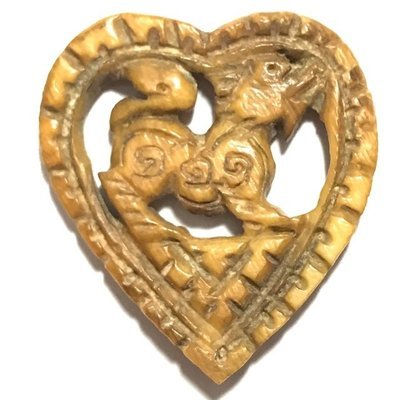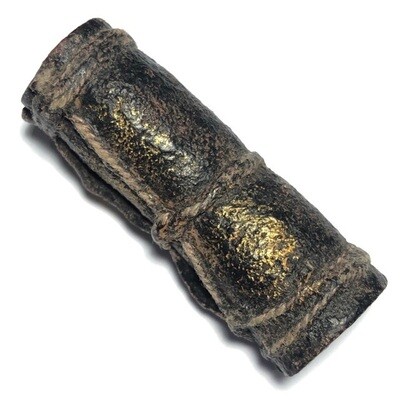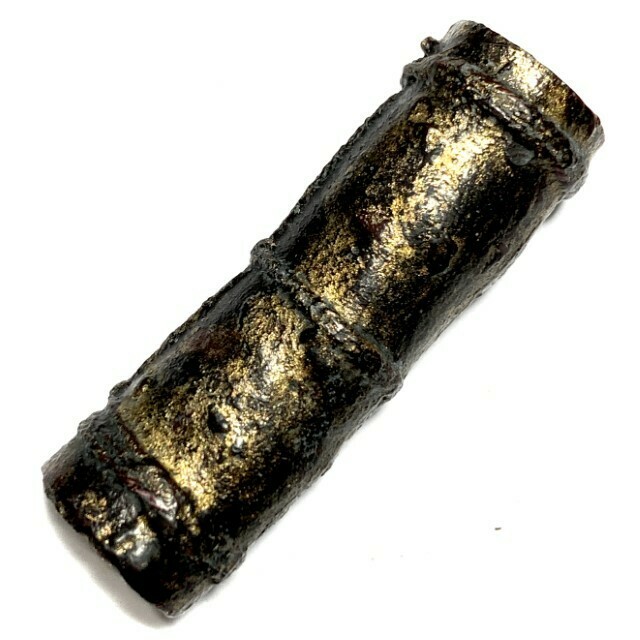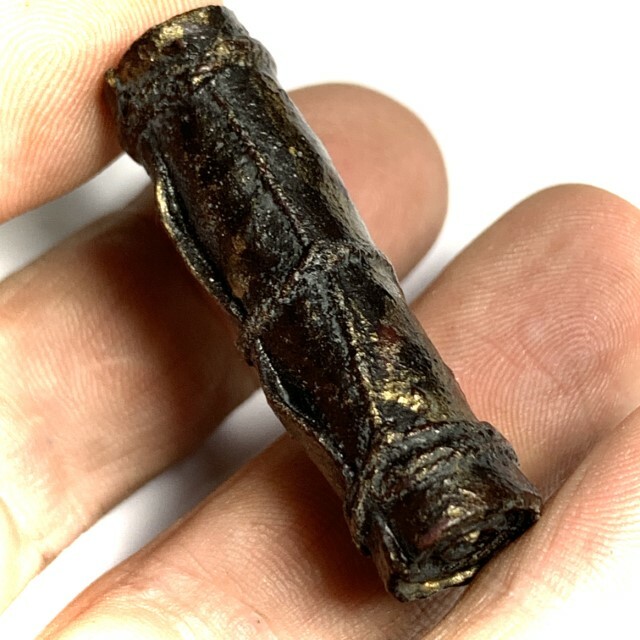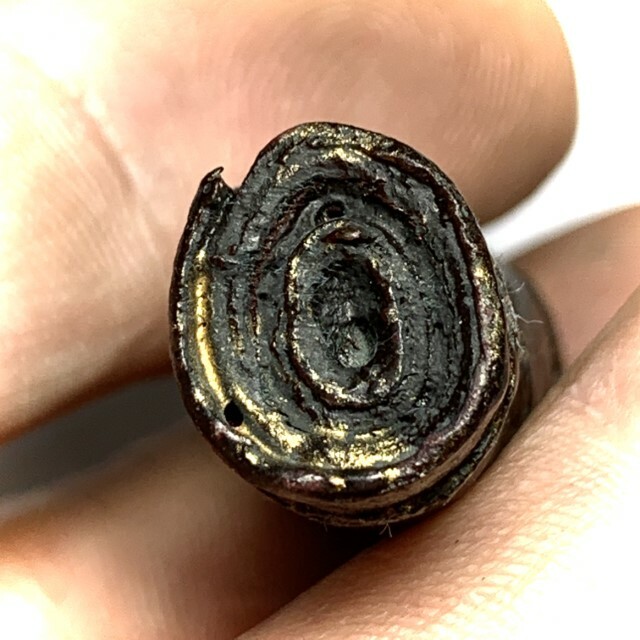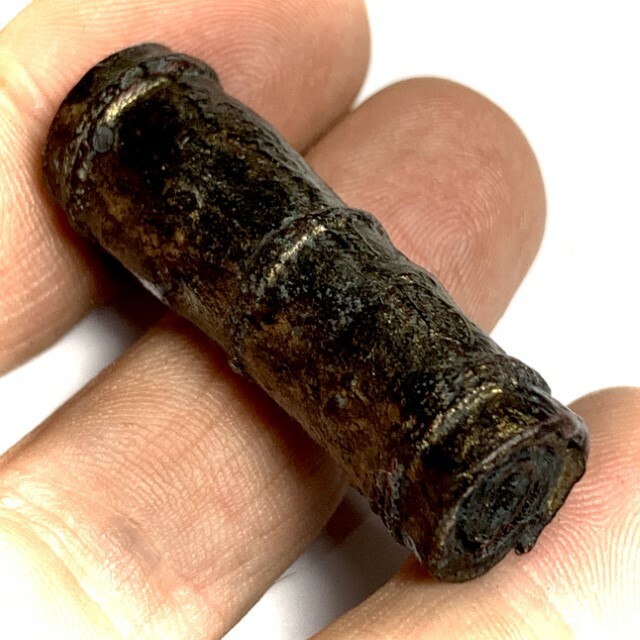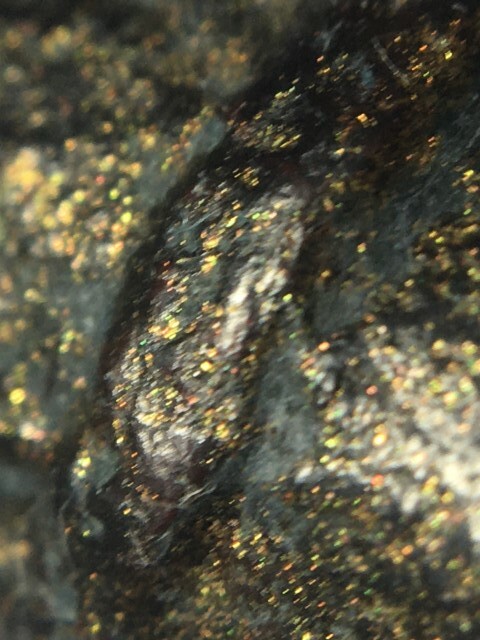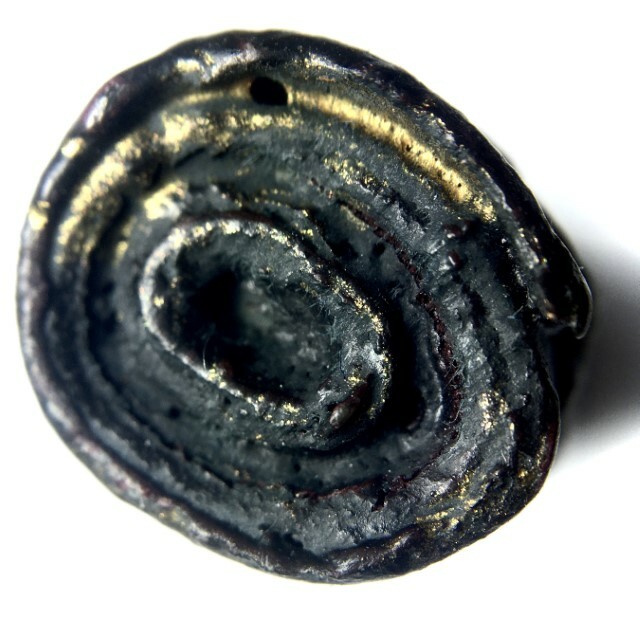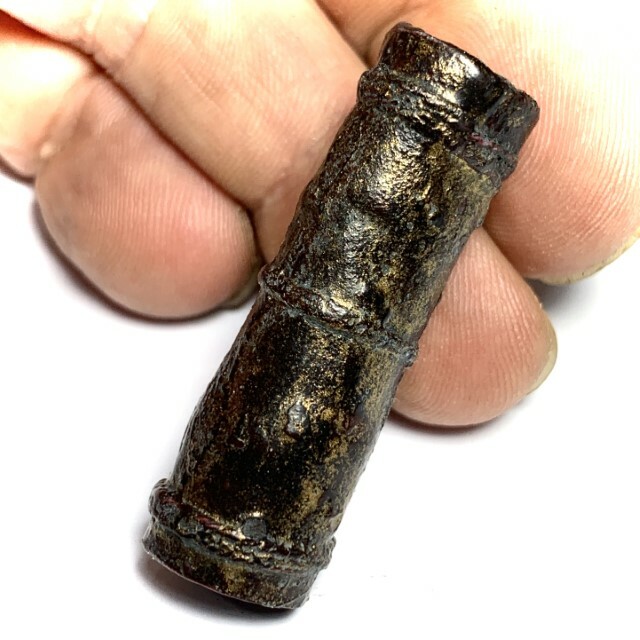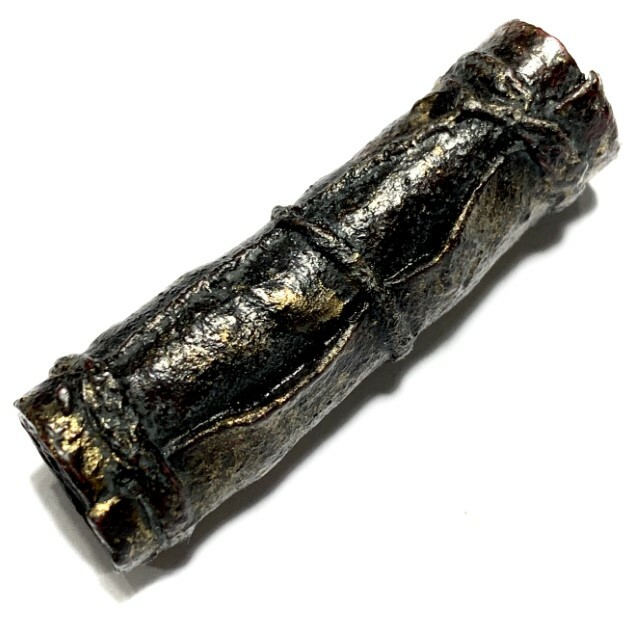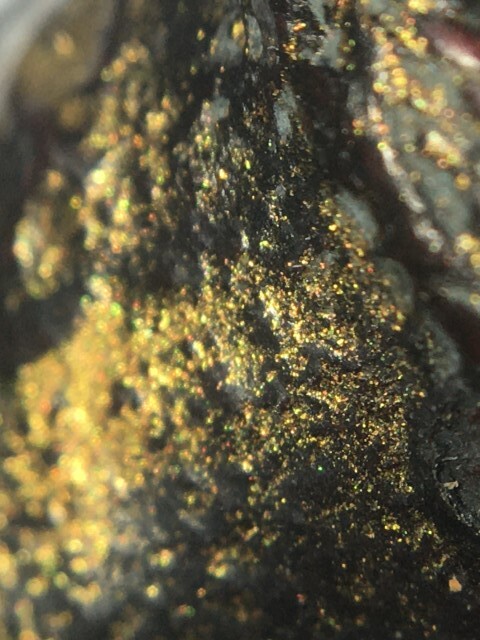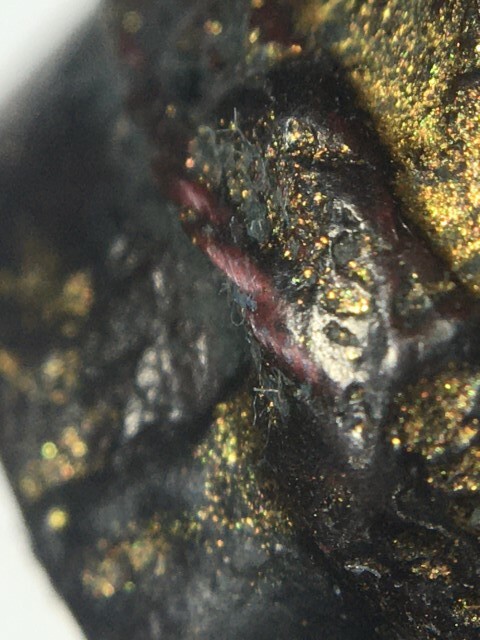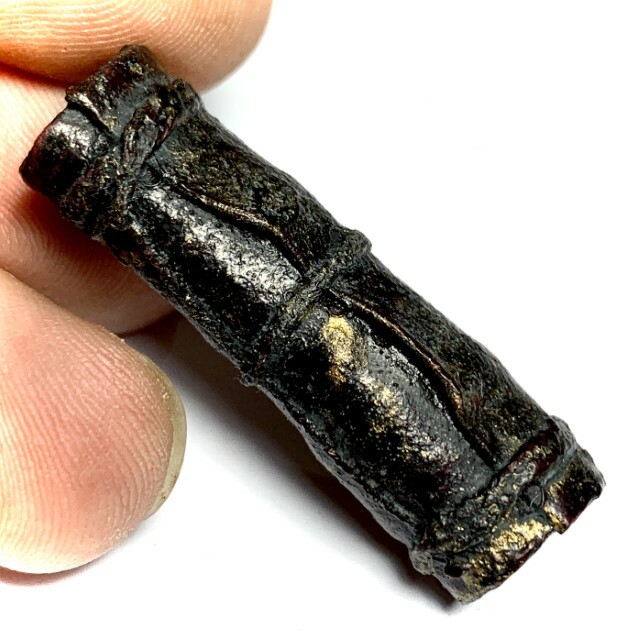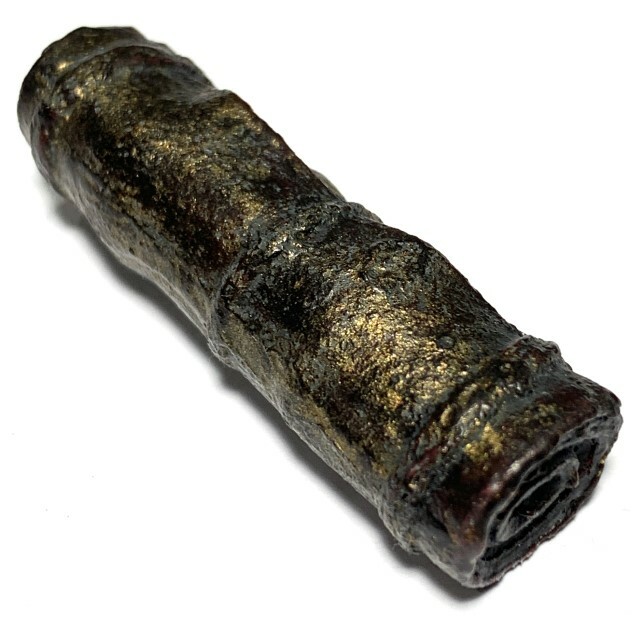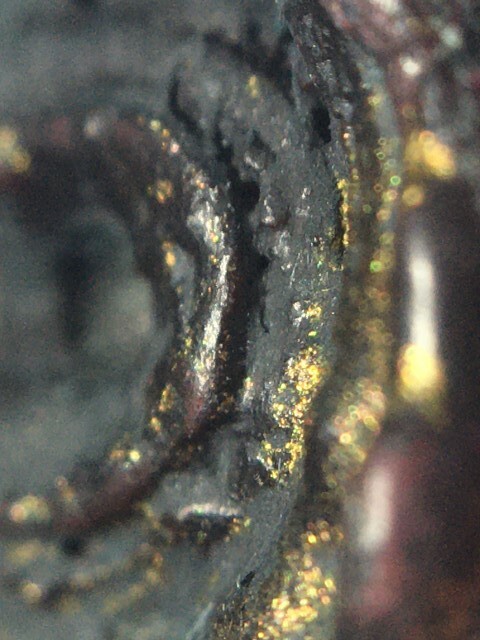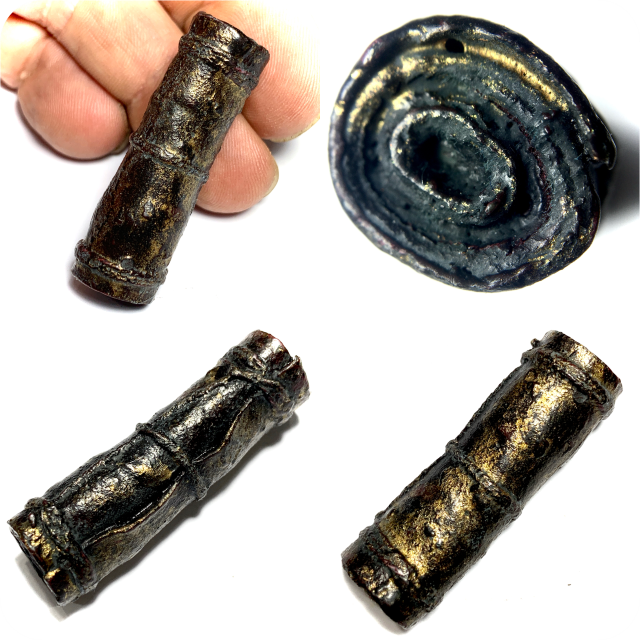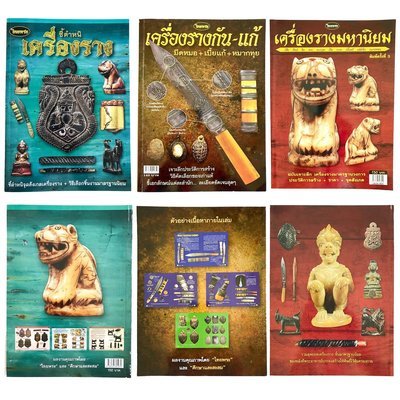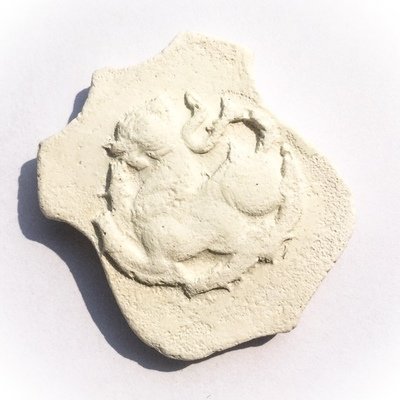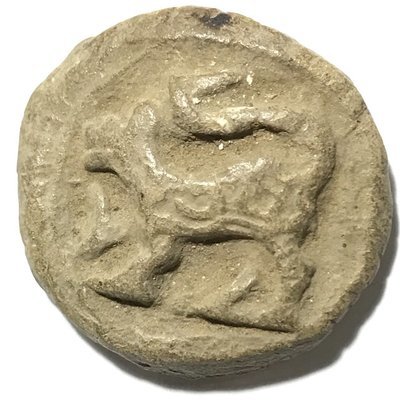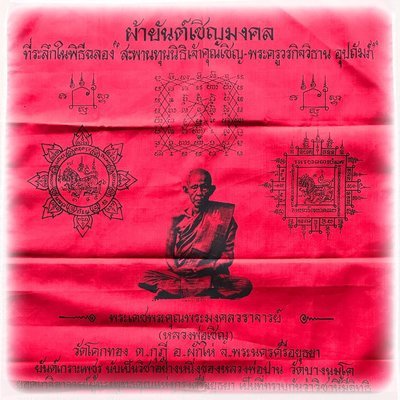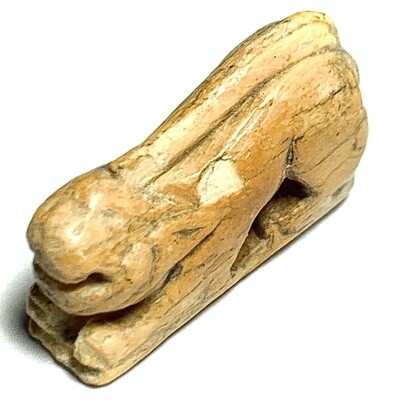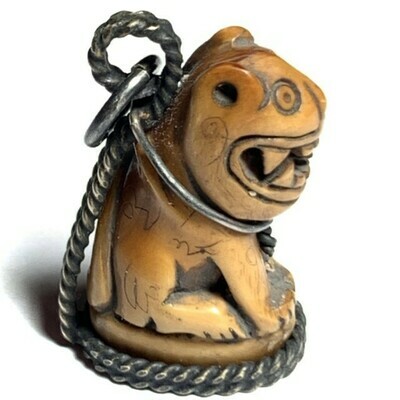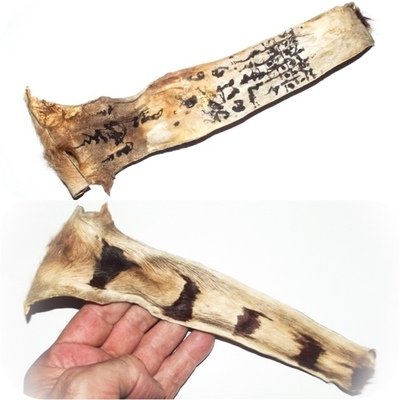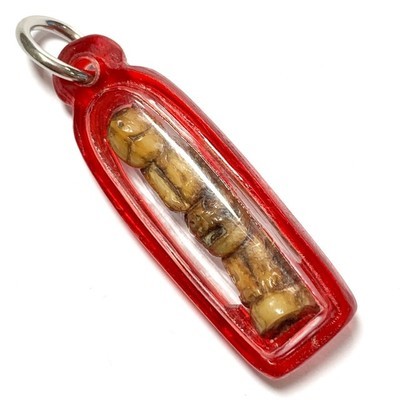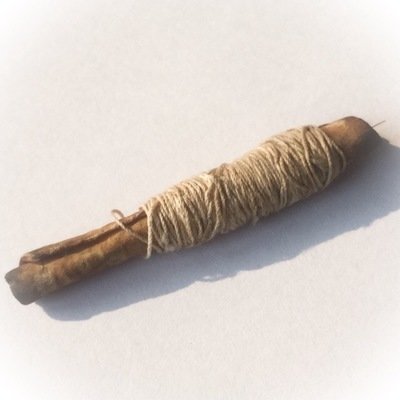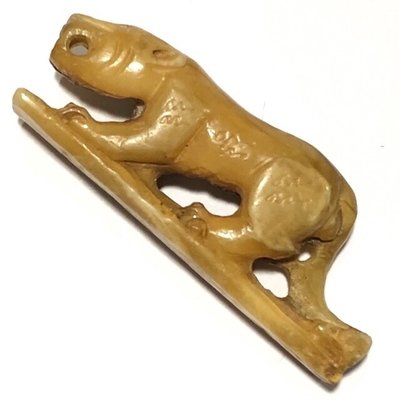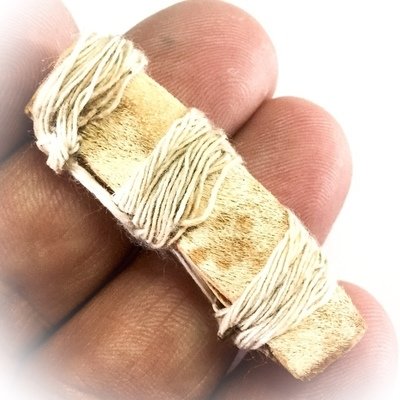A pristinely kept and extremely rare Rian Mangorn Koo Nuea Nava Loha Pim Pised Dtok Sorng Code Ma Wat Pha Nong Lom Run Sao Ha Maha Sethee 5th Lunar Saturday Blessing Ceremony Edition Guru Monk Coin, released in 2543 BE, to raise funds for the Kuti Songk Monks Huts and improve the facilities at the temple of Wat Pha Nong Lom.
This model of Rian Mangorn Koo twin dragons Monk Coin is a very rare Pim Pised (Niyom preferred) and differs from the majority of Rian Mangorn Koo Wat Pha Nong Lom Edition coins in Nava Loha, because of the double code MA stamp. Most coins of the Nava Loha series made for Wat Pha Nong Lom have only a single code Ma Stamp (on the Sangkati chest sash of the robe of Luang Phu), and only the Pim Pised special models received double code stamps. Only very few (unknown number) were distributed with double code stamp, making this not only a sacred, powerful master class amulet, but also a rare collectors piece.
The Rian Mangorn Koo of Luang Phu Hmun is, as are all of his amulets, known for the power of Jaroen Lap Wealth Increasement, and Lucky Fortunes, as well as for their Miraculous Protective Powers. Those born in the year of the dragon love to Bucha this amulet especially, for the obvious reason of the double dragon guardians.
For those with lower budgets, who seek power above collectability and rarity, we recommend to seek the Rian Mangorn Nuea Tong Daeng or Nava Loha single Code Ma, of the same edition, which carries a lower price than this special Nava Loha Pim Pised Gammagarn double code collectors edition model.
Takrut Hnang Hnaa Bpaag Suea Tiger Forehead Spell 2475 BE Luang Phu Nak Wat Arun Free Express Shipping
A classic Pra Niyom Category amulet that is extremely rare to encounter, and highly renowned for its Maha Amnaj, Klaew Klaad, and Kong Grapan Magic, the world famous Takrut Hnaa Bpaag Suea Tiger Takrut, of Luang Phu Nak (Pra Pimontam), of Wat Arun Rachaworaram. As a point of interest, Wat Arun is also known as the Temple of the Dawn, also known as 'Wat Jaeng', because both 'Arun' and 'Jaeng', mean 'the Dawn'). Luang Phu Nak was a Guru Master-Monk of immense Status in the eyes of the community, with Great Merits to his name, and was renowned for his powerful mind and meditative ability.

It is It is said that in olden days during Luang Phu Nak's time, his devotees would notice how when they passed a cowshed, even the Buffaloes would cower in fear at their sensing of the Magic of the fearsome Tiger emitted by the Takrut Hnaa Bpaag Suea of LP Nak. They would run to escape, as if a real tiger was hunting them.
Luang Phu Nak was extremely famous for various amulets, especially his Takrut, and above all, his Takrut Hnaa Bpaag Suea Tiger Forehead skin spell composed of Sinjana cord wrapped and lacquer covered skin of the forehead of a Suea Kroeng Tiger.
The Takrut Hnaa Bpaag Suea of Luang Phu Nak, is believed to posses immense Kong Grapan Chadtri Invincibility Magic of the Ancient Warriors, Maha Ud Gunstopper Magic, and Klaew Klaad Evasive Magic to Evade Death by Accidents, as well as powerful Anti Black Magic, and Metta Maha Niyom mercy Charm, with Maha Amnaj Commanding Power and Superiority Magic.
Biography of Luang Phu Nak (Wat Arun) Luang Phu Nak was born on the 3rd of January 2415 BE, in Ban Bang Poon, in the province of Pathum Thani. His father was named Mr. Nuan, and his mother was named Mrs. Luean.
When he was a young boy, he was sent to be educated by Pra Ajarn Kroo Forn, until he reached the age of 12 years old. At age 12, he was ordained as a Samanera Novice Monk at Wat Sarapat Chang. Pra Atigarn Hwang Tamma Chodti was his Upachaya Ordaining Officer Monk, who thereafter taught the young Samanera, who was to become the Great Gaeji Ajarn LP Nak, in the Dhamma Vinaya, until he came of age.
Luang Phu Nak was then reordained as a fully fledged Bhikkhu, through Pra Atigarn Hwang taking Luang Phu Nak to Luang Por Pra Tamma Warodom (Luang Por Daeng), of Wat Sutat in Bangkok (Royal Decree Monk and Abbot of the Temple at that time. This was the year of the Dragon in 2435 BE, when LP Nak was Ordained as a fully fledged adult Bhikkhun(Buddhist Monk) at the Great Temple of Wat Sutat.
He was Ordained by Somdej pra Wanaratana (LP Daeng) as Upachaya, and Pra Kroo Tamma Saree (Luang Por Hwang), of Wat Tian Thawaay in Pathum Thani as his 'Koo Suad' (Prompter, for one must memorize 45 minutes worth of Pali Language Chanting to Ordain, and cannot use the book to assist you, and therefore need a Prompting Officer to assist when you forget your lines). He was given the 'Chaayaa' (Monk's name), of 'Sumananaakoe' (Companion of the Nagas), and in fact, his common name of Luang Phu Nak, means 'Reverend Grandfather Naga' .
Once he was fully Ordained, he began to study the Dhamma Pariyatti (Theoretical Dhamma) in the Samnak of Somdej Pra Wanaratana (LP Daeng), his first Kroo ba Ajarn. He also studied at the Samnak Praya Dhamma Breechaa Tim, and became Genial in his knowledge of this aspect of the study of the teachings of the Buddhist Canon.
In the Year 2433 he translated the Pariyatti Dhamma from Pali to Thai reaching the level of Prayoke 4 9 (four paragraphs), in O-Level/College Degree Grammatical Accuracy (no mean feat at such an early stage). In the Year 2437, he translated the Pariyatti Dhamma from Pali to Thai reaching the level of Prayoke 6 University Entry level degree of Grammatical Accuracy, which was for Monks of that Era an Immensely Grand Achievement and proof of immense mental Intelligence.
In the Year 2441, he translated the Pariyatti Dhamma from Pali to Thai reaching the level of Prayoke 7 in Grammatical Accuracy
In the Year 2442, Luang Phu nak was awarded the status of Pra Racha Kana Tee Pra Racha Kana Kroo Sompoche (Royally Comissioned Advisor to the Abbot and Sangha Comittee) of Somdej Pra Wanaratana Luang Por Daeng.
In the Year 2461 BE he was elevated to status of Pra Racha Kana Chan Rach Pra Racha Suree. In the Year 2464 BE, he was Royally Beseeched to become the Abbot of Wat Arun Racha Woraram, and Awarded status of Pra Upachaya (Able to Ordain others - a status given only to those monks who can recite the 1 hour long Patimokkha from memory).
In the Year 2467 BE, he was awarded the Royal Name and Status of Pra Tama Dilok. In the Year 2476, Luang Phu Nak was awarded the Name 'Pra Upasika Kunupamajarn' as a mark of national respect. In the Year 2482, he was raised once again in status to have the title of 'Pra Racha Kana Chan Hiranyabadtr Pra Pimon Tam'.
Luang Phu Nak was hence a Genius in both the Pariyatti Dhamma (knowwledge of all the teachings of the Buddha), as well as the Practical side of Vipassana Kammathana Internal Undirected and Directed Mindfulness Practices, and Samatha Meditation, and Jhanic Kasina directed Meditations. He was also highly learned in the Wicha Puttasart and Saiyasart Buddha magic and Occult Sorcery, and was seen to possess the ability to empower amulets through his Vipassana Kammathana practices.
He learned most of his initial Wicha from Luang Por Hwang of Wat Tian Thawaay, who is the Master who initiated Luang Phu Nak into the secrets of the Wicha Takrut Hnang Hnaa Bpaag Suea, and the Wicha Long Yant Pha Prajiad Daeng (red Yantra Cloth Sacred Geometry magic), which was the most famous Wicha of Luang Por Hwang. There were many stories of guns refusing to fire upon those who wore these amulets, which only served to increase the faith of the devotees in the power of Maha Ud Kong Grapan Chadtri maha Amnaj within the Takrut Hnang Hnaa Bpaag Suea tiger forehead skin Yantra scroll spell, and the red Pha Yant Prajiad Yantra cloth.
In the year 2475 BE, Luang Phu Nak reached the age of 60, and the Sangha and Devotees, decided to make some Roop Tai Ad Grajok Khaw Hlaam Dtat(glass sealed photos in rhombus shape), as an official edition of amulets, to protect and increase the wealth and wellness of the local devotees and those near and far. In truth, Luang Phu Nak himself never issued the order or intention to make any amulets in his own image, and told the Devotees and the Committee that, if they were to do so, he didn't want anything to do with it, and that they should go and see Pra Ajarn Pa of Wat Rakang, to ask him for advice and assistance in the making of the amulets.
Pra Ajarn Pa hence assisted, and issued them in the year 2471 BE. Once the amulets were made and blessed at Wat Rakang, the Devotees took the batch of amulets to Luang Phu Nak, who then performed empowerment over them, for distribution during the 50th ordained anniversary (60th Birth year) of Luang Phu Nak. Before the Ceremony of release and final Putta Pisek Blessing Ceremony, Luang Phu Nak made some hand made inscribed Takrut Hnaa Bpaag Suea Tiger Forehead Skins, bound and lacquered with gold leaf (some with, some not).
He only made a limited number, for handing out to his closest Devotees, which is one reason why the takrut Hnaa Bpaag Suea Luang Phu Nak is so rare to find, and therefefore, also highly valued. Luang Phu Nak would not hand these Takrut out frivolously, and would choose carefully who he gave one to, and would only issue them in small numbers. This was because the Wicha Takrut Hnaa Bpaag Suea he had inherited from Luang Por Hwang of Wat Tian Thawaay, required the Takrut to be made and completed on occasions of 5th Lunar Saturdays only, which are rare, and therefore made it impossible to make his Takrut in any large numbers.
The Devotees of the time would go to buy Tiger skin from the Jao Grom Ber shop in fromt of Wat Sam Plerm, as in those days, hunters and collectors of animal hides, bone, teeth and the like would take their wares to sell through this shop. (hides and parts, many of which are now prohibited to sell, but which in those days was common to see on the market). Luang Phu Nak would usually make his Takrut somewhere between 1 to 2 Inches long, which allowed for only a few Takrut to be made from one forehead skin, which was why his Takrut were rarely seen over 2 Inches long.
He would first immerse the forehead skin in holy water to soften the dry skin, and then scrape off the fur, to leave bare skin, and then use the skin to wrap into Takrut scrolls, which he would inscribe and empower with Wicha Maha Ud. He would also then once the skin was soft through immersion, inscribe further Khom Agkhara Sanskrit spells, to invoke the spirit of the tiger, using the Wicha Akarn 32, and the Wicha Hnun Taat 4, to reanimate the power and spirit within the tiger forehead. Luang Phu would then tie the wrapped Hnaa Bpaag Suea hide scroll with holy Sinjana cords, to prevent the scrolls from unwinding as they dried over the decades. The Takrut are seen to be lacquered, many with flakes of gold leaf visible. Most will have the Sinjana cord wrapping, but there are also some exhibits which do not have the Sinjana cord binding too (rarer).
Once the Takrut had been made on a 5th Lunar Saturday, Luang Phu would then keep them to empower in his Kuti hut until the next 5th Lunar Saturday occurred (however long that may be). And then, he would give a final Buddha Abhiseka empowerment and blessing to the Takrut, and issue them to his devotees thereafter one at a time during visits.
The Takrut Hnaa Bpaag Suea of Luang Phu Nak Wat Arun, os a very rare amulet to behold in this day and age, and is one of the most preferred Maha Ud Kong Grapan amulets of all time.
Pra Pimon Tam Luang Phu Nak passed away in the year 2485 BE during the reign of his Majesty King Rama 5 at the age of 72 years and 6 months. Luang Phu Nak remains perhaps the most well remembered and respected, and revered monk of Wat Arun in the minds of Thai people of the last Century.
